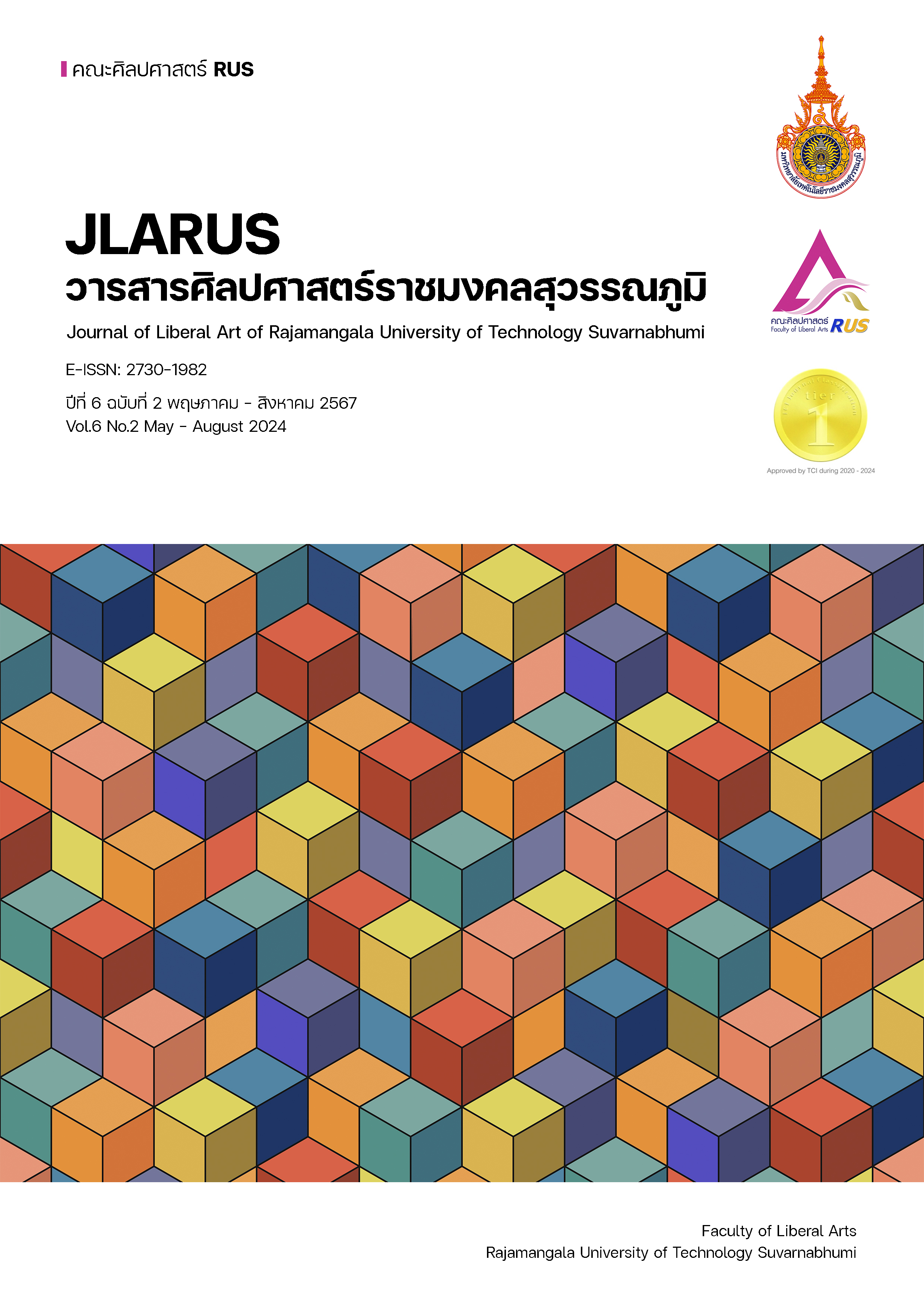OUTCOME STUDY OF CHINESE LANGUAGE TEACHING AND LEARNING IN PUBLIC SCHOOLS IN BANGKOK
Main Article Content
Abstract
This study thoroughly examined the challenges and opportunities associated with Chinese language instruction in public schools in the Bangkok Metropolitan Area. This study aimed to: 1) examine the issues related to Chinese language teaching in public schools in the Bangkok Metropolitan Area, 2) analyze the problems of teaching Chinese in these schools, and 3) provide guidelines for teaching Chinese more effectively to both administrators and learners in the Bangkok Metropolitan Area. This qualitative research utilized in-depth interviews for data collection. The findings revealed that students lacked exposure to Chinese culture and had misunderstandings about it. There was a mismatch in learning strategies between teachers and students. Teachers lacked proper training and teaching methods, and students had limited opportunities to use Chinese in the classroom, leading to ineffective learning outcomes. The analysis grounded in various theories, touched upon aspects like motivation for learning, integration with the Chinese Proficiency Test (HSK), and the suitability of the curriculum. Students struggled to access and deeply understand Chinese culture, affecting their enthusiasm and efficiency in learning the language. Additionally, a discrepancy was found between teachers and students regarding teaching methods and learning strategies, complicating the learning process further. The study recommended several strategies to enhance the teaching and learning of Chinese. These included refining teaching methods, better integrating the educational content with HSK examinations to provide clear, attainable goals for students, facilitating greater access to Chinese culture and society to enrich the learners' experiences, and employing advanced language perception techniques to boost students' understandings and using of Chinese. Implementing these recommendations could lead to more effective Chinese language education, thereby preparing students for greater academic and professional success in a global context.
Article Details

This work is licensed under a Creative Commons Attribution-NonCommercial-NoDerivatives 4.0 International License.
References
Abraham, R. G., & Vann, R. J. (1987). Strategies of two language learners: A case study. Learner strategies in language learning, 85(102), 1-8.
Anh, D. T. N. (2019). EFL student’s writing skills: Challenges and remedies. IOSR Journal of Research & Method in Education, 9(6), 74-84.
Bin, W., Deebhijarn, S., Taghipour, A., Ahadi, N., & Norkaew, O. (2019). Administrative Policy of Culture Ministry in Thailand and China. International Journal of Scientific Research and Engineering Development, 2(5), 532-543.
Corder, S. P. (1978). Simple codes’ and the source of the second language learner's initial heuristic hypothesis. Studies in second language acquisition, 1(1), 1-10.
Ellis, R. (1997). Second language acquisition. The United States: Oxford, 98.
Ewe, L. C., & Min, F. (2021). Teaching Chinese Language Outside of China: The Case of Chinese Teachers in Thailand. Asia-Pacific Social Science Review, 21(4).
Gong, X. (2019). The belt & road initiative and China’s influence in Southeast Asia. The Pacific Review, 32(4), 635-665.
Krashen, S. (1982). Principles and practice in second language acquisition.
Krashen, S. D., Long, M. A., & Scarcella, R. C. (1979). Age, rate and eventual attainment in second language acquisition. TESOL quarterly, 573-582.
Lee, T.-Y., Ho, Y.-C., & Chen, C.-H. (2023). Integrating intercultural communicative competence into an online EFL classroom: an empirical study of a secondary school in Thailand. Asian-Pacific Journal of Second and Foreign Language Education, 8(1), 4.
Li, J. (2023). Integrating Chinese traditional culture into college English teaching from the perspective of cultural self-confidence. Academic Journal of Humanities & Social Sciences, 6(3), 13-17.
Oxford, R. L. (1990). Language learning strategies: What every teacher should know. (No Title).
Schumann, J. H. (1986). Research on the acculturation model for second language acquisition. Journal of multilingual & multicultural development, 7(5), 379-392.
Selinker, L. (1972). Interlanguage.
Siewseng, Y., Tuntinakhongul, A., & Tungkunanan, P. (2021). Components of Chinese Language Teacher's Functional Competencies: A Confirmatory Factor Analysis. International Journal of Instruction, 14(1), 813-826.
Waters, T., & Day, M. J. (2022). Thai menschenbild: a study of Chinese, Thai, and international students in a private Thai university as measured by the national survey of student engagement (NSSE). Humanities and Social Sciences Communications, 9(1), 1-12.
Xiaolong, L. (2021). ศูนย์บริการการสอบภาษาจีนแห่งอาเซียนรายงานประจำปี2021. ศูนย์บริการการสอบภาษาจีนแห่งอาเซียน.
Yuwei, H., Juecheng, Z., & Shuangyan, H. (2023). Enthusiasm for learning Chinese rises in Thailand as Chinese replaces Japanese as second-largest foreign language. global times. Reviewed August 21, 2023. From https://www.globaltimes.cn/page/202308 /1296691.shtml.
Zawacki, B. (2021). Thailand: Shifting ground between the US and a rising China. Bloomsbury Publishing.


